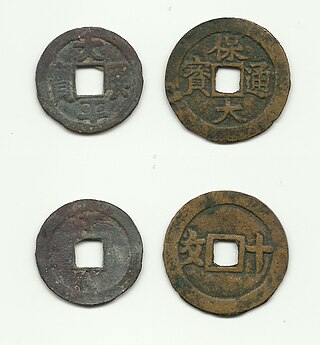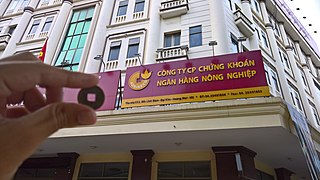Cash is legally recognized money in such forms as banknotes and coins.
Contents
- Currency
- Places in the United States
- People
- Arts and entertainment
- Films
- Music
- Other arts and entertainment
- CASH
- Other uses
- See also
Cash also may refer to:
Cash is legally recognized money in such forms as banknotes and coins.
Cash also may refer to:
Phoenix most often refers to:
True most commonly refers to truth, the state of being in congruence with fact or reality.
Pink is a pale red color.
A hero is somebody who performs great and noble deeds of bravery.
Tanner may refer to:
Fixer or The Fixer may refer to:

The piastre de commerce was the currency of French Indochina between 1885 and 1954. It was subdivided into 100 cents, each of 2~6 sapèques.
The earliest coinage of Asia is also the oldest coinage of the world. Coins were invented several times independently of each other. The earliest coins from the Mediterranean region are from the kingdom of Lydia, and are now dated ca. 600 BCE. The dating of the earliest coins of China and India is difficult and the subject of debate. Nevertheless, the first coins of China are at least as old as the earliest Lydian coins and possibly older, while the earliest coins of India seems to have appeared at a later stage.

The cash was a currency denomination used in China in imperial times. It was the chief denomination until the introduction of the yuan in the late 19th century.

The cash, also called the sapek or sapèque, is a cast round coin with a square hole that was an official currency of Vietnam from the Đinh dynasty in 970 until the Nguyễn dynasty in 1945, and remained in circulation in North Vietnam until 1948. The same type of currency circulated in China, Japan, Korea, and Ryūkyū for centuries. Though the majority of Vietnamese cash coins throughout history were copper coins, lead, iron and zinc coins also circulated alongside them often at fluctuating rates. Coins made from metals of lower intrinsic value were introduced because of various superstitions involving Vietnamese people burying cash coins, as the problem of people burying cash coins became too much for the government. Almost all coins issued by government mints tended to be buried mere months after they had entered circulation. The Vietnamese government began issuing coins made from an alloy of zinc, lead, and tin. As these cash coins tended to be very fragile, they would decompose faster if buried, which caused the Vietnamese people to stop burying their coins.

The term tiền is used to refer to various currency-related concepts used in Vietnamese history. The name is a cognate with the Chinese qián (錢), a unit of weight called "mace" in English. It can refer to a unit of weight used in precious metal coinages as well as the number of cash coins in a string. The name was also used for different awards, both Chinese-style and Western-style awards given in Vietnam throughout different times of its history.
The penny is a coin used in several English-speaking countries.
Chinese cash may refer to:

The cash or qian was a type of coin of China and the Sinosphere, used from the 4th century BC until the 20th century AD, characterised by their round outer shape and a square center hole. Originally cast during the Warring States period, these coins continued to be used for the entirety of Imperial China. The last Chinese cash coins were cast in the first year of the Republic of China. Generally most cash coins were made from copper or bronze alloys, with iron, lead, and zinc coins occasionally used less often throughout Chinese history. Rare silver and gold cash coins were also produced. During most of their production, cash coins were cast, but during the late Qing dynasty, machine-struck cash coins began to be made. As the cash coins produced over Chinese history were similar, thousand year old cash coins produced during the Northern Song dynasty continued to circulate as valid currency well into the early twentieth century.
A noble is a member of the nobility.
Vietnamese units of measurement are the largely decimal units of measurement traditionally used in Vietnam until metrication. The base unit of length is the thước or xích. Some of the traditional unit names have been repurposed for metric units, such as thước for the metre, while other traditional names remain in translations of imperial units, such as dặm Anh for the mile.

The Vietnamese văn as a denomination for Vietnamese cash coins was used from 1868 until 1945 during the reign of the Nguyễn dynasty. The inspiration to introduce the văn may have been to emulate the Chinese wén used on contemporary Qing dynasty cash coins which had just become a fiat currency, however unlike the Chinese system where all Chinese cash coins were cast from the same metals and the wén was the primary unit of account for coins made of the same metals, the Vietnamese system used the văn as a basic number currency symbol indicating how much zinc cash coins a brass or bronze cash coin was worth, the Vietnamese cash coins-based currency system used the mạch (陌) and quán (貫) as units of account that could be based on either zinc cash coins or copper-alloy cash coins depending on the region or context. It was continued to be used as a measurement for zinc cash coins when the French Indochinese piastre was introduced, after which the term still appeared on Vietnamese cash coins and represented a subdivision of copper-alloy cash coins rather than the piastre, this was known in French as the sapèque en zinc, as the production of zinc coinage was ceased by the Imperial government of the Nguyễn dynasty around the year 1871.

A string of cash coins refers to a historical Chinese, Japanese, Korean, Ryukyuan, and Vietnamese currency unit that was used as a superunit of the Chinese cash, Japanese mon, Korean mun, Ryukyuan mon, and Vietnamese văn currencies. The square hole in the middle of cash coins served to allow for them to be strung together in strings. The term would later also be used on banknotes and served there as a superunit of wén (文).

Cash coins are a type of historical Chinese, Japanese, Korean, Ryukyuan, and Vietnamese coin design that was the main basic design for the Chinese cash, Japanese mon, Korean mun, Ryukyuan mon, and Vietnamese văn currencies. The cash coin became the main standard currency of China in 221 BC with the Ban Liang (半兩) and would be produced until 1912 AD there with the Minguo Tongbao (民國通寶), the last series of cash coins produced in the world were the French Indochinese Bảo Đại Thông Bảo (保大通寶) during the 1940s. Cash coins are round coins with a square centre hole. It is commonly believed that the early round coins of the Warring States period resembled the ancient jade circles (璧環) which symbolised the supposed round shape of the sky, while the centre hole in this analogy is said to represent the planet earth (天圓地方). The body of these early round coins was called their "flesh" (肉) and the central hole was known as "the good" (好).